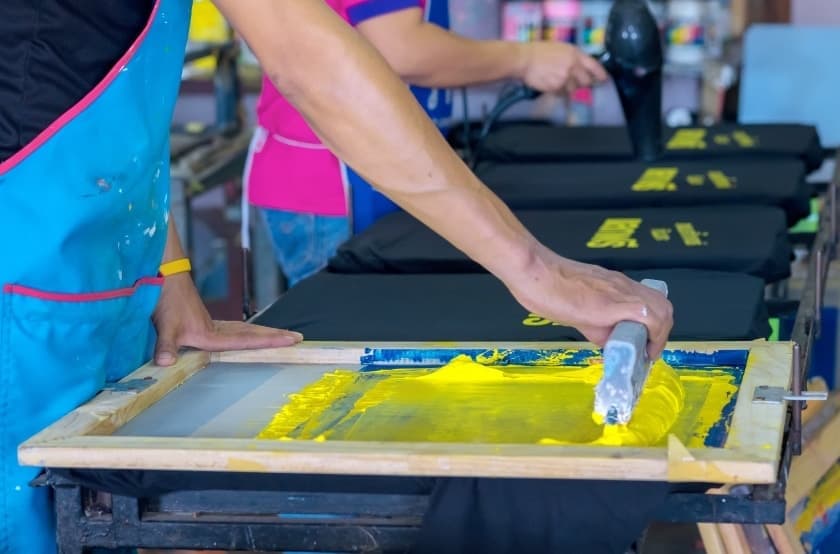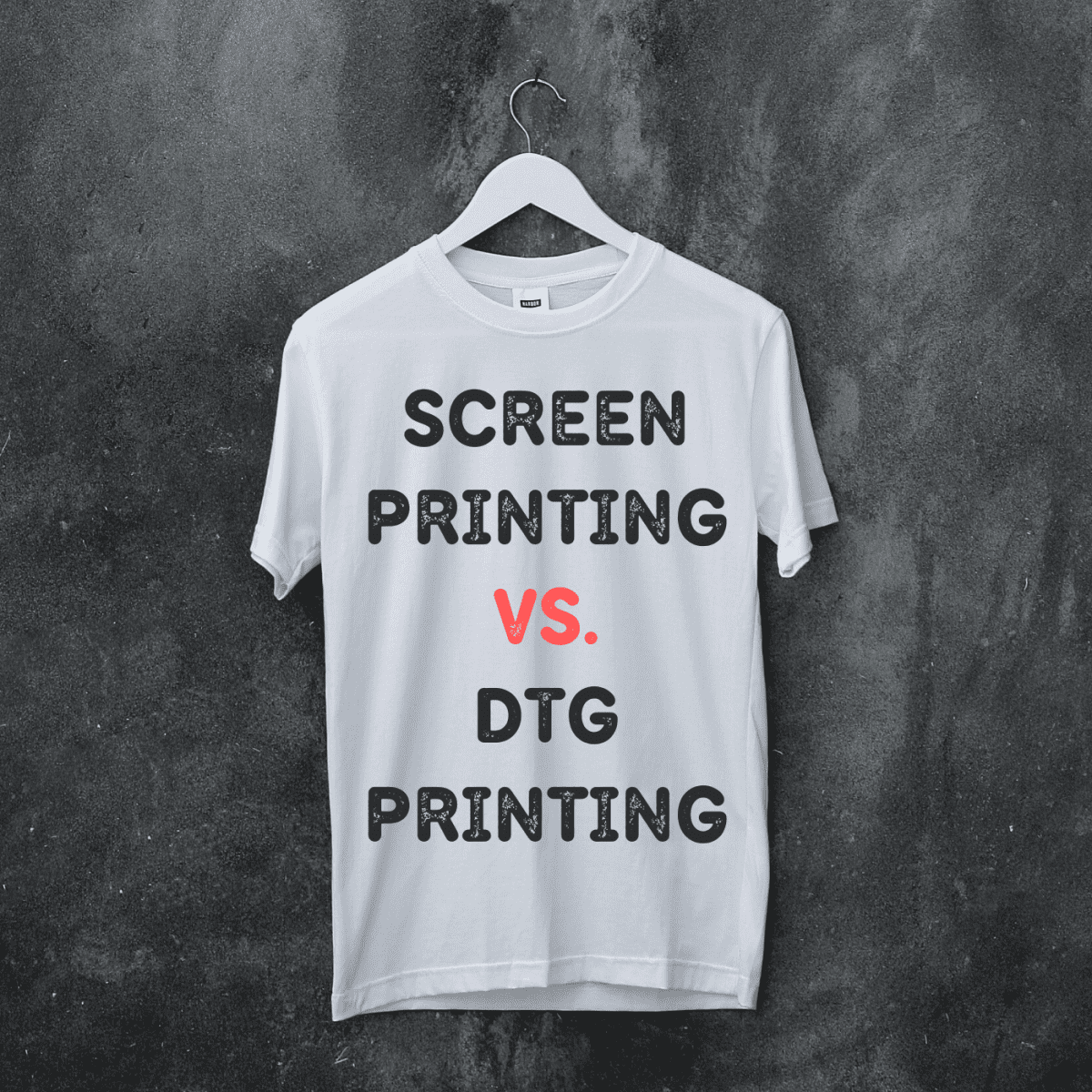How Tx Tees can Save You Time, Stress, and Money.
3 Easy Facts About Tx Tees Explained
Table of ContentsWhat Does Tx Tees Do?Tx Tees for DummiesSome Ideas on Tx Tees You Need To KnowThe 4-Minute Rule for Tx TeesExamine This Report about Tx TeesSome Known Incorrect Statements About Tx Tees 9 Easy Facts About Tx Tees Explained
That brings your total amount to about $1,900 gross and shipping. Build up other expenses, like the number of utilities it takes to run the store and the expense of ink and emulsion per layout. custom t-shirt design. Take the print listed below. This is a one-color picture, so the price of ink per tee shirt is roughly 20 cents.The solution needs to just be a couple of cents given that you 'd just require to coat one screen for this job. Typically, printers try to make up to 45% profit on a print job.

With DTF, you can print a handful of shirts, or simply one. Both screen printing and DTF have their particular niches in the world.
Tx Tees - Truths
The most effective method to recognize? Ask around and see what print shops like yours are doing. custom cap printing. Attempt both out and see which you like far better
When you're picking what type of printing method to utilize for printing your artwork styles on your garments, it is necessary that you know the differences between these two techniques so you can optimize outcomes while decreasing prices. Display printing is one of the most commonly used technique for publishing layouts on fabrics.
DTG printing is additionally referred to as place or straight to garment printing due to the fact that it publishes just what is required rather of making a display as display printers do. https://pubhtml5.com/homepage/kmsyk/. Screen printing functions by display filler squeegee display printing ink display mesh screen, then moving the photo to garment making use of heat and/or stress
The DTG printer utilizes unique dye-sublimation inks that are used right into a pre-designed picture by an electronic printing system. The inks enter into the material, enabling lively colors and phenomenal detail. It's additionally known as place or direct to garment printing since it publishes only what is needed as opposed to making a screen as screen printers do.
The Only Guide to Tx Tees
It's much quicker - you can publish a fullcolor photo in mins, as opposed to hours for screen printing. Second, there's no established up time or expenses included - you can publish any kind of style you like, without needing to develop a screen initially. Third, there's no waste - due to the fact that display printers screen print one layout each time, they need to screen each color separately.
The paper is very expensive and can only be made use of as soon as. Once it's published on, it has actually to be thrown out. - The first acquisition cost is less than the upfront investment of DTG printers- You can publish multi-color layouts one display each time as opposed to having to publish each shade individually like DTG printing.

The Main Principles Of Tx Tees
Instead of utilizing screen mesh as display printers do, color sublimation printers make use of laser technology to move your images onto garments or paper. A warm procedure moves the dye from its solid-state straight right into the gas stage which in turn fuses it onto material substrates when they are quickly warmed to high temperature levels under high pressure.
Sublimation printing is environment-friendly. It makes use of much less water than screenprinting, and due to the fact that it does not involve the use of damaging solvents, it's risk-free for all kinds of garments. The color sublimation inks are additionally unsmelling when cured, unlike display printers that make use of hazardous chemicals during the screen printing process that leave behind an unpleasant smell.
They additionally conserve cash on pricey tools like direct exposure devices given that color sublimation printers do not need a UV exposure unit or a flash cure oven that is typically used in display printing (custom cap printing). What is direct to garment printing (DTG Printing)? DTG printing is a digital screenprinting procedure that publishes directly onto fabric making use of specialized inkjet printers
The Single Strategy To Use For Tx Tees
DTG printing supplies lots of benefits over typical screenprinting, consisting of the ability to publish photographic top quality pictures, greater shade vibrancy, and the ability to publish styles on darker textiles. DTG printers work by warming the fabric ink up until it turns right into a gas. The gas then penetrates the fabric, bonding with the fibers to produce a permanent print.

Display printers merely prepare their screen then start printing until they lack item or ink.- There is a wide variety of seasoned display printers around the world, which can be useful for beginners. - It's a slower process - display printers usually need to wait on the ink to dry prior to they can publish the next color- Screen printers require manual work, so there's a higher knowing curve and it takes longer to produce a high-quality layout- Display printing isn't as precise as DTG printing, so you may obtain some "blood loss" of colors from one component of the picture onto another otherwise done appropriately.
Tx Tees - The Facts
Nevertheless, instead of utilizing screen mesh as screen printers do, color sublimation printers utilize laser technology to move your images onto garments or paper. A heat process moves the color from its solid-state directly into the gas stage which in turn merges it onto textile substrates when they are quickly warmed to high temperatures under high pressure.
Sublimation printing is green. It uses much less water than screenprinting, and due to the fact that it doesn't include using harmful solvents, it's secure for all kinds of clothing. The color sublimation inks are likewise unsmelling when healed, unlike display printers that utilize unsafe chemicals during the screen printing procedure that leave behind an unpleasant smell.
They additionally conserve cash on costly tools like direct exposure units since dye sublimation printers do not require a UV exposure device or a flash remedy oven that is typically utilized in display printing. What is straight to garment printing (DTG Printing)? DTG printing is an electronic screenprinting process that prints directly onto textile using specialized inkjet printers.
Tx Tees Fundamentals Explained
DTG printing provides lots of benefits over traditional screenprinting, including the ability to print photographic high quality images, higher shade vibrancy, and the capability to print styles on darker fabrics. DTG printers work by heating the textile ink up until it develops into a gas. The gas then penetrates the fabric, bonding with the fibers to develop a permanent print.